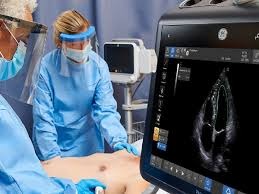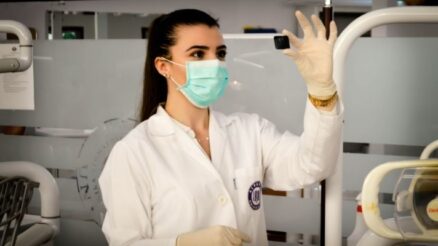Mastering critical care ultrasound is essential for healthcare professionals looking to enhance diagnostic accuracy and improve patient outcomes. A specialized critical care ultrasound course provides hands-on training in key techniques, from assessing hemodynamics to guiding procedures with precision. Whether you’re an experienced clinician or just starting, this course equips you with the skills needed to make confident, real-time decisions in critical situations.
Understanding the Basics of Critical Care Ultrasound
The Science Behind Ultrasound: How It Works in Critical Care
Critical care ultrasound utilizes ultrasound physics to develop real-time, dynamic visualization of the human body, enabling rapid yet informed decision-making in emergency and critical care environments. A transducer generates sound waves that are transmitted through body tissues, and the sound waves return echoes that represent the density and acoustic properties of the different tissues.
Ultrasound does not employ ionizing radiation, making it a safer option, especially for sensitive patients, compared with X-rays and CT scans. In critical care, where time is essential, point-of-care ultrasound (POCUS) is invaluable for immediate assessments, particularly in unstable patients where delays can negatively impact outcomes. As technology advances, ultrasound devices have become more compact, allowing for real-time bedside examinations that support early condition management.
The Role of Ultrasound in Emergency Medicine: A Lifesaver in Action
The introduction of ultrasound into emergency medicine has rapidly expanded the diagnostic toolbox for emergency providers. With ultrasound, you can assess various conditions, including diagnosing cardiac effusion, trauma, and visualizing large vessels, as well as guiding invasive procedures.
One key application is the FAST (Focused Assessment with Sonography for Trauma) exam, which enables rapid assessment of patients suspected of internal hemorrhage. This technique not only speeds up diagnosis and optimizes immediate treatment decisions but also saves lives in urgent cases where every second matters. Additionally, ultrasound allows providers to track diseases like congestive heart failure or pneumonia, offering more individualized treatment and timely interventions.
Types of Ultrasound: What Every Critical Care Provider Should Know
Understanding different ultrasound techniques is crucial for critical care clinicians to select the right method for each patient. There are two main types of ultrasound:
- Diagnostic Ultrasound – Used to image organs, such as echocardiography for cardiac function and abdominal ultrasound for organ assessment.
- Procedural Ultrasound – Used for guiding invasive procedures like central lines, paracentesis, and thoracentesis to enhance accuracy and reduce risks.
Additional techniques, such as Doppler ultrasound, assess blood flow in vessels, which is essential for diagnosing conditions like deep vein thrombosis or arterial occlusions. Choosing the right device, timing, and setting ensures improved patient care and expands the role of ultrasound in emergency medicine.
Why a Specialized Course is Essential for Your Career
The Competitive Edge: Stand Out in the Medical Field
In today’s competitive job market, medical professionals must continually enhance their skills. A critical care ultrasound course provides specialized training that can set you apart and accelerate your career. As healthcare increasingly demands rapid decision-making, ultrasound proficiency becomes a critical skill that differentiates providers from their peers.
Beyond clinical expertise, ultrasound certification increases employability and earning potential. With its expanding applications in fields such as anesthesiology, emergency medicine, and pediatrics, specialized training prepares you for diverse medical environments.
READ MORE : Tailoring the Service to Unique Needs
Bridging the Knowledge Gap: From Theory to Hands-On Application
While theoretical knowledge is essential, hands-on training transforms you into a proficient ultrasound operator. Targeted courses integrate interactive learning, simulations, and peer-to-peer exercises that bridge the gap between theory and practice.
Most courses include:
- Lectures on ultrasound science and applications
- Hands-on sessions using models or real patients
- Structured feedback from experienced instructors
By practicing in real-world scenarios, trainees gain technical proficiency and confidence, ensuring they can apply ultrasound techniques effectively in critical care settings.
Networking Opportunities: Building Connections with Industry Leaders
Ultrasound training courses also offer valuable networking opportunities, bringing together experienced educators and innovators in the field. Engaging with fellow trainees and instructors enables you to exchange ideas, share experiences, and access new career opportunities.
These professional connections often lead to:
- Mentorships with seasoned ultrasound practitioners
- Collaborations on research or clinical advancements
- Job placements in top healthcare institutions
Networking in these specialized courses can be the key to unlocking career opportunities that might not otherwise be available.
What to Expect from a Comprehensive Critical Care Ultrasound Course
Curriculum Breakdown: Key Topics Covered and Skills Developed
A well-structured critical care ultrasound course covers a range of topics essential for mastering this field, including:
- Cardiac, abdominal, and vascular ultrasound
- Airway emergency management
- Ultrasound-guided procedures (thoracentesis, paracentesis, central lines)
- Integration of ultrasound findings into clinical decision-making
Trainees develop core skills such as image acquisition, interpretation, and hemodynamic evaluation, which are vital in emergency and critical care scenarios. The course also incorporates modern imaging approaches like echocardiographic assessment to ensure well-rounded training.
Learning Techniques: Interactive Approaches for Maximum Retention
To maximize knowledge retention, ultrasound training incorporates various interactive methods, including:
- Practical workshops
- Simulation-based learning
- Team-based exercises
Simulation training provides a risk-free environment for learners to refine fine motor skills and practice ultrasound techniques without harming patients. Additionally, emerging technologies like virtual reality (VR) and digital applications create immersive learning experiences that replicate real clinical scenarios.
Real-World Applications: Case Studies and Practical Skills in Action
Beyond theoretical knowledge, courses include case studies to demonstrate ultrasound’s role in critical care. These cases span a wide range of conditions, from trauma assessments to critically ill patients with complex health challenges.
Live recordings from real cases promote discussion and critical thinking, helping providers develop decision-making skills that directly impact patient care. Exposure to real-world examples ensures that ultrasound techniques are not just learned but truly integrated into clinical practice.
Transforming Patient Care: The Impact of Ultrasound Training
Enhanced Diagnostic Abilities: Making Better Clinical Decisions
Critical care ultrasound training significantly improves a clinician’s ability to make accurate and timely diagnoses. Ultrasound enables rapid bedside assessments, reducing the time from examination to treatment—especially crucial in emergency settings where quick decisions can save lives.
Research shows that trained ultrasound providers demonstrate higher diagnostic accuracy compared to traditional imaging methods, leading to better patient safety, fewer procedural complications, and improved care efficiency.
Improving Patient Outcomes: Real-Life Success Stories
The impact of ultrasound training on patient outcomes is well-documented. Rapid ultrasound assessments have helped detect life-threatening conditions early, leading to immediate interventions and preventing fatalities.
For instance, in patients with septic shock or unexplained hypotension, focused ultrasound evaluations allowed for precise, life-saving treatments. In heart failure cases, bedside ultrasound enabled real-time monitoring and optimized fluid management, reducing hospital readmissions and improving recovery.
Future Trends: The Evolving Landscape of Critical Care Ultrasound
Advancements in ultrasound technology continue to shape its role in critical care. Key future trends include:
- AI-powered ultrasound for enhanced diagnostic accuracy
- Tele-ultrasound applications in remote healthcare settings
- Portable, real-time imaging solutions for on-the-go diagnostics
As the field evolves, staying updated with new technologies ensures healthcare professionals remain competitive and prepared for future challenges.





